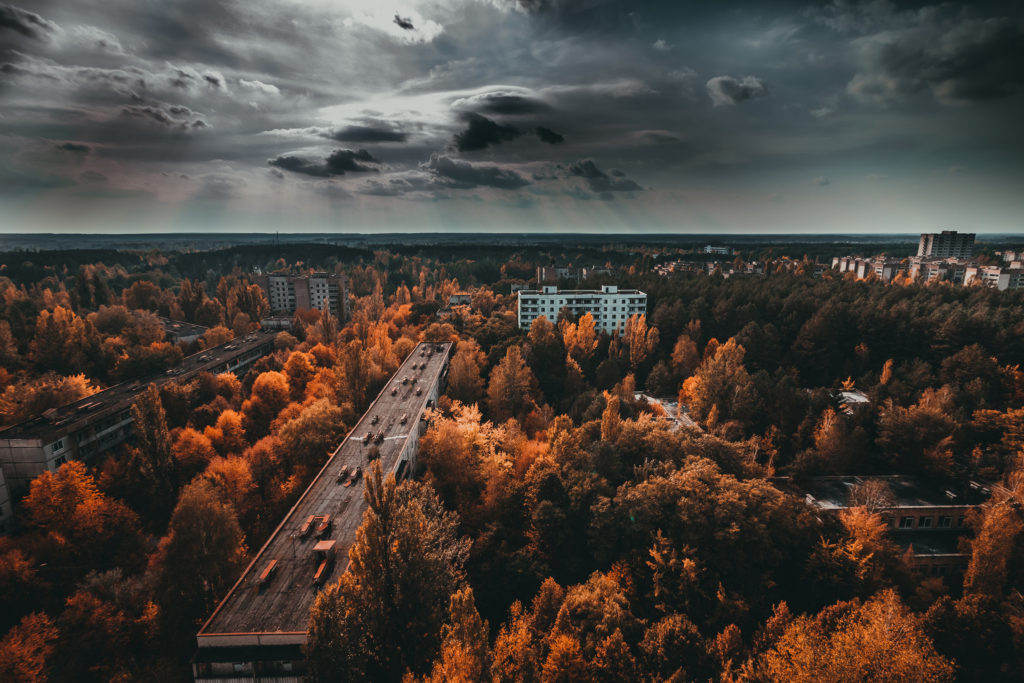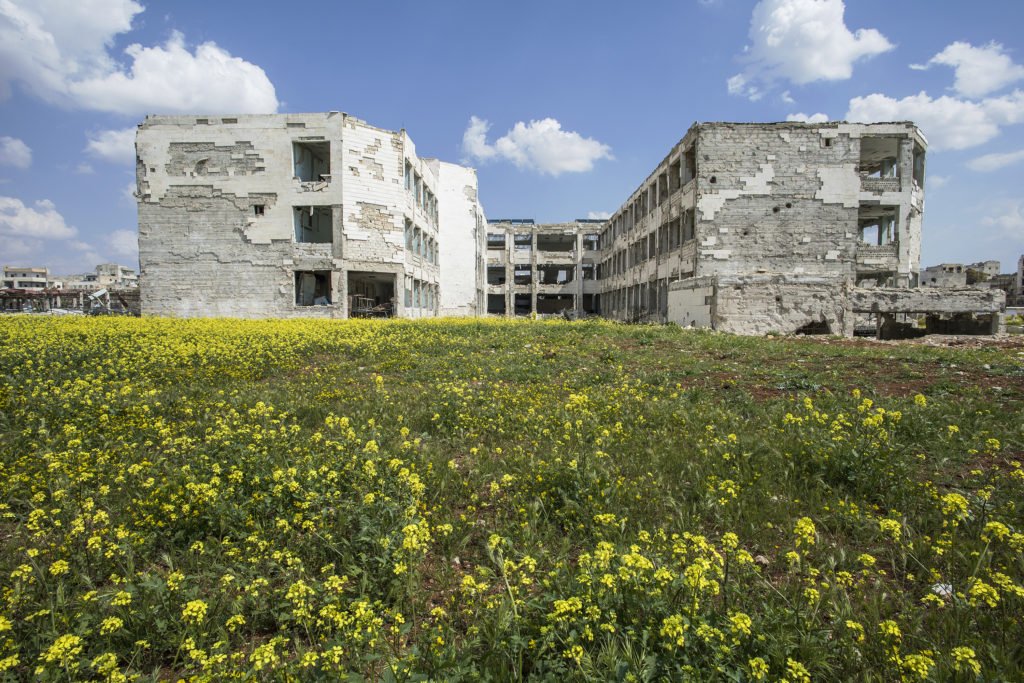
Aleppo, Syria, is one of the oldest continuously inhabited cities in the world. Today, Aleppo is a war-torn, environmentally degraded ruin.
Scholars and policymakers often trace such wastelands to a handful of root causes: religious strife, the legacy of colonialism, weak or failed states that invite violence, intervention and reckless development. But in recent years, a group of faculty at Washington University in St. Louis has explored a new framework, one that highlights the roles of ecological, technical and material conditions.
This fall, Nancy Y. Reynolds, associate professor of history, and Anne-Marie McManus, assistant professor of modern Arabic literature and culture, both in Arts & Sciences, will launch their new Mellon Sawyer Seminar, “Grounding the Ecocritical: Materializing Wastelands and Living on in the Middle East,” which is funded by a $175,000 grant from the Andrew W. Mellon Foundation. The seminar’s schedule begins with a workshop Sept. 29.
In this Q&A, Reynolds and McManus, who have joint appointments in the Department of Jewish, Islamic and Near Eastern Languages and Cultures in Arts & Sciences, discuss the seminar, the environmental humanities and how we think about “unproductive” spaces.
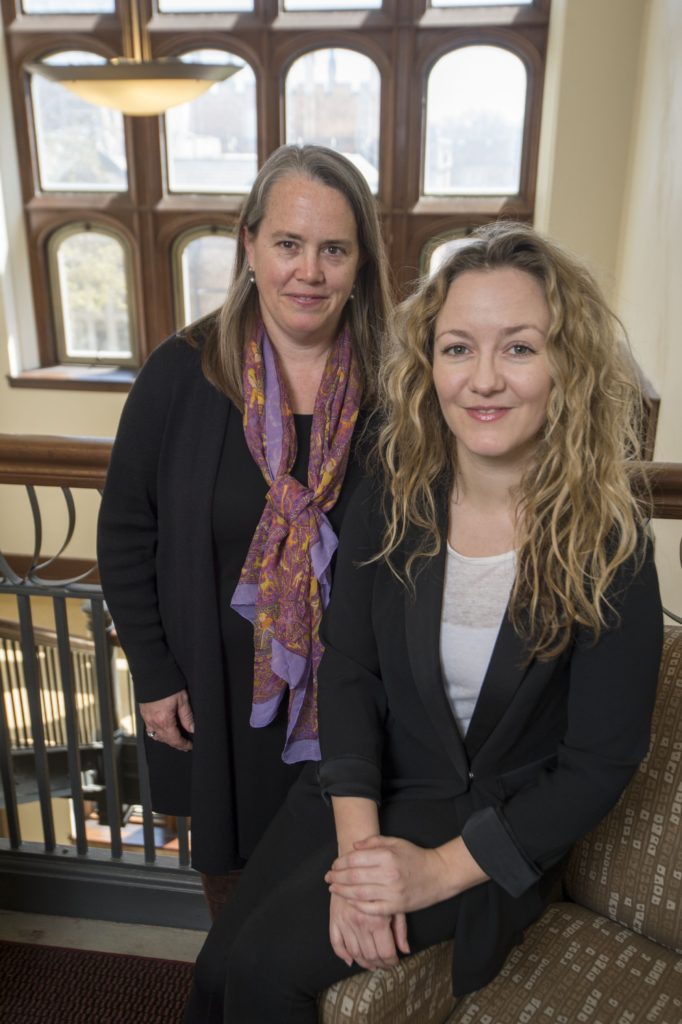
The Sawyer Seminar begins this fall, but the project also grows out of a faculty reading group you launched in 2014 with the Center for the Humanities in Arts & Sciences. What drew you to the wasteland?
McManus: I noticed that I was teaching a generation of students who have grown up with wars in Iraq, Afghanistan and, most recently, Syria. There’s a longstanding stereotype of the Middle East as just a vast desert, and this image coincides with widely held notions of the region as sociopolitical wasteland. Years of war pass, and the ruined cities and blighted landscapes seem interchangeable. In the end, people stop paying attention.
Reynolds: I was working on the history of a landscape in the south of Egypt’s Nile Valley that, in the late 1960s, was destroyed by the Aswan High Dam project. Anne-Marie was analyzing literary works that utilize “wastelands” and “ruins” to harness ancient themes in Arabic literature — particularly poetry — to modernist and postmodernist challenges.
We decided that both investigations would benefit from ecocritical and environmental inquiry. Exciting things happen when we pair humanistic analysis with technical understanding of specific places and how they change over time.
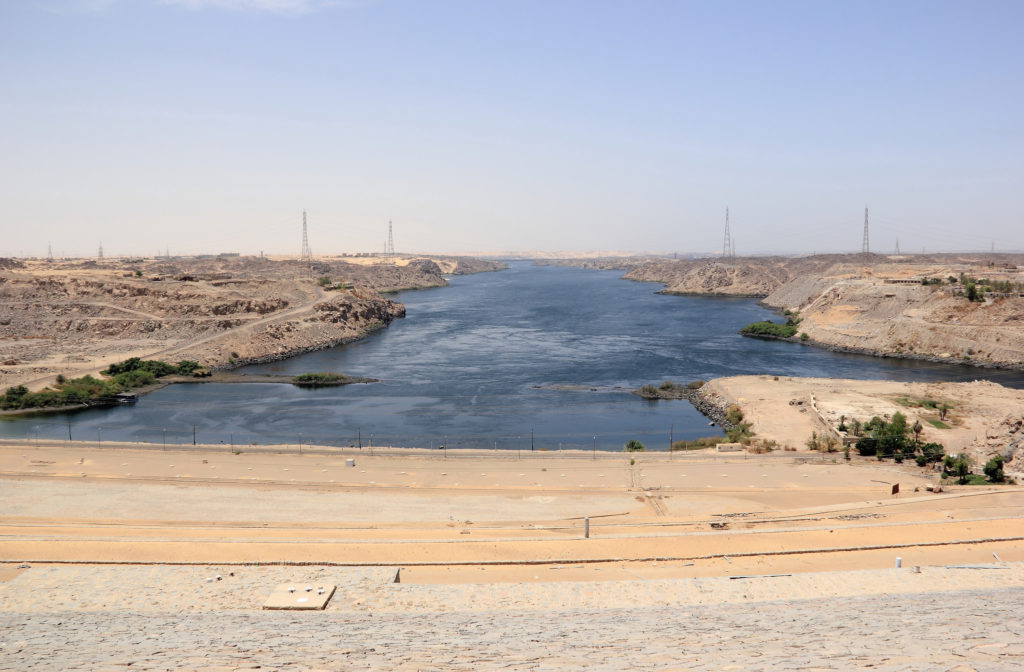
Describe your conception of the wasteland.
McManus: We use the term to denote spaces characterized by material and environmental degradation, ruin, decay and abandonment, as well as the forms of social and natural life that inhabit them.
Our work is informed by, but also critical of, artistic representations of wasted spaces — such as T.S. Eliot’s “The Wasteland” (1922), which has an influential history in Arabic poetry. We’re not interested in romanticizing decay or the nostalgia of ruins, but in the particular ways that human and non-human life coexist within wasted spaces.
Why focus on the Middle East?
Reynolds: In the U.S., environmental debates often assume that nature represents a sort of pristine wilderness largely untouched by humans — or that human impact can be measured against some pristine originary landscapes. However, scholars have argued that in the Middle East, as in Africa, human impact has been continuous for millennia.
And the Middle East has long been central to debates about the global environment. The region is a major oil producer and among the most arid lived environments on earth. In relation to climate change, we tend to see the Middle East as our collective environmental future. But this is complicated — and perhaps made more deeply frightening — by depictions of violence, especially since 9/11. The whole region is sometimes interpreted as being “against us.”
We hope to understand the Middle East as a series of smaller regional subsets. By demarcating various kinds of wastelands — desert stretches, urban ruins, desiccated farmland — we can show important lines of stratification within the region.
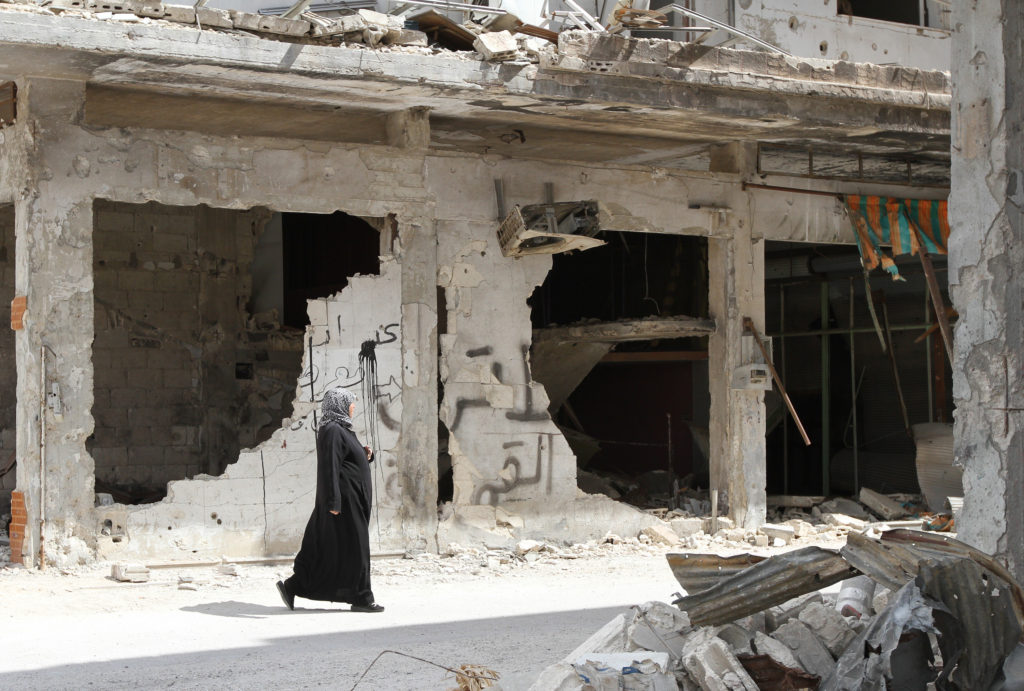
What role do you see the seminar playing?
Reynolds: We hope it will serve as a “pop-up center” for the study of environmental humanities on campus and throughout the region. St. Louis has very strong environmental studies, environmental policy and environmental sciences — anchored by institutions such as InCEES, the Missouri Botanical Garden and the Donald Danforth Plant Science Center.
But we also see a place for humanistic environmental inquiry, to address the experiences of people and communities facing climate change right now. The humanities are comfortable in such a space. Literature, history and anthropology, for instance, all share a focus on storytelling. How do cultural narratives emerge from local conditions?
What are the most surprising things you’ve learned so far?
McManus: One of the most interesting avenues to emerge from the original faculty reading group was the idea that the scale and gravity of climate change robs us of established storytelling techniques and genres. How can we tell stories of environmental degradation — both current and future — that don’t automatically tend to the apocalyptic, the science fictional?
By harnessing humanistic methods, we hope to hone in on wastelands as sites where life continues, and to think critically about the ways stories are told about degraded, “unproductive” places.
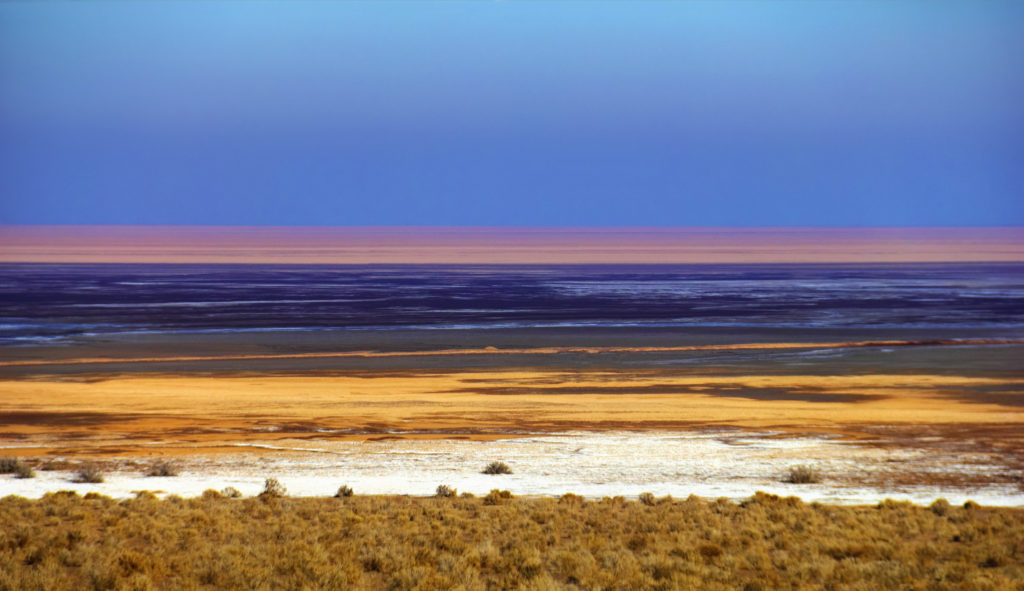
So, what can humanistic methods add to environmental analysis?
Reynolds: They help us explore stratifications of power. For instance, some humanities scholars have challenged the notion of the Anthropocene — the idea that we live in a geological age defined by human impact. Who, exactly, is the Anthropos, or human, in the Anthropocene? Are all humans equally responsible? Or do some have more impact than others?
People in the Global South have been asking such questions for a long time. We saw this in 2015, during negotiations that led to the signing, in Rwanda, of an amendment to the Montreal Protocol. Countries such as India, Pakistan and the Gulf States — which have not been industrialized as long as Europe and North America — negotiated longer timetables for reducing emissions of hydrofluorocarbons (HFCs), which are released by low-cost air conditioning and refrigeration units.
Another theme you explore is the ground. How does the ground affect our perception of the wasteland?
McManus: In the social sciences and humanities, the study of human societies tends to focus on life above ground, despite the fact that much of our existence derives from things below the earth’s surface.
New research theorizes terrain and ground not just through discrete material objects — soil, rocks, water, the roots of plants and trees — but also as a conceptual category that highlights the physicalities and rhythms of place. We’re especially interested in cultural-social approaches that treat ground as infused with the practices and memories of the humans who inhabit it.
Our project, then, is to ground ecocriticism in place by attending to the interplay of human-initiated and non-human life in wastelands.
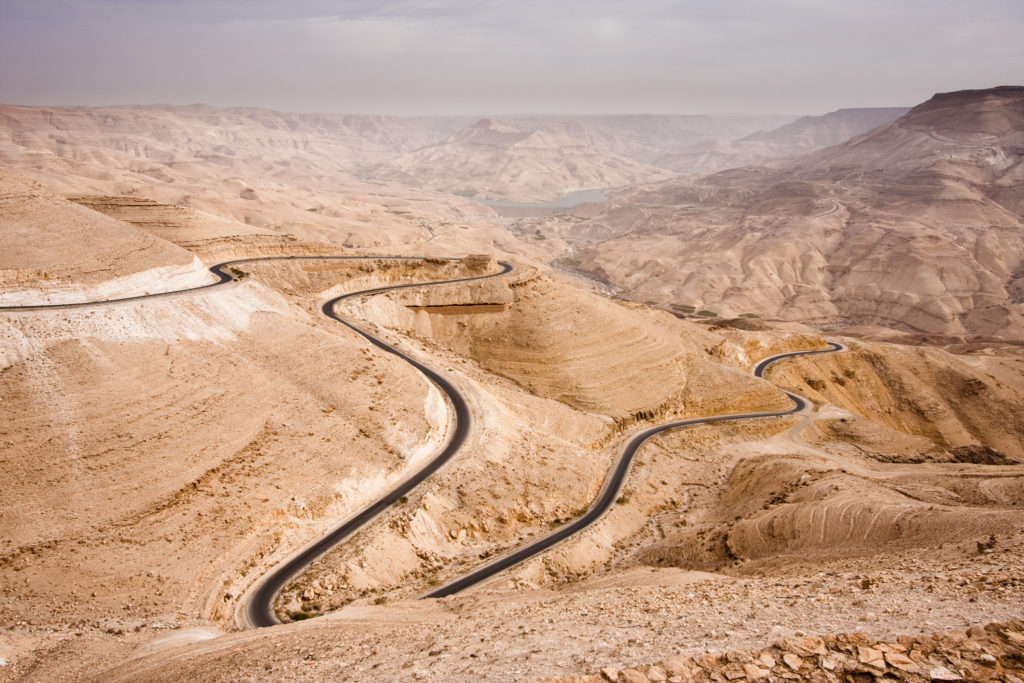
You’ve also explored Argentina’s Gran Chaco lowlands and Chernobyl’s radioactive Exclusion Zone, which has become a haven for wildlife. Has this work impacted how you view sites in the U.S.?
Reynolds: The U.S. is deeply implicated in the Middle East, of course, but sometimes that can feel far from campus. Through our research on wastelands, however, we began to uncover surprising local connections.
For example, T.S. Eliot was born in St. Louis in 1888 and lived on Locust Street until he was 16. After participating in the Wastelands faculty seminar, landscape architect Christine Abbott began mapping pedestrian itineraries and perceptions of danger against actual crime statistics in midtown St. Louis.
Without initially realizing it, she mapped an area of Locust Street that included the site of Eliot’s home. It’s now an empty lot. So the wastelands work has circled back to us in a more direct way than we imagined.
For more information about the Sawyer Seminar, including a list of upcoming events, visit https://www.materializingwastelands.org.
